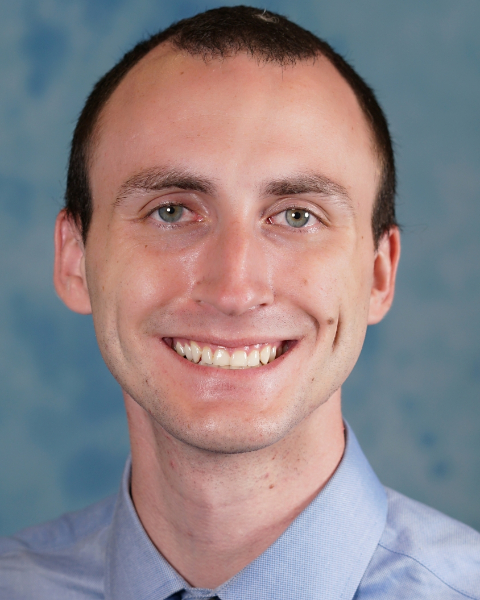PQA 02 - PQA 02 Physics Poster Q&A
2381 - Application of Standardized Tissue Repair Discount Factors to Guide Spinal Cord Dose in Reirradiation
Sunday, September 29, 2024
4:45 PM - 6:00 PM ET
Location: Hall C
Screen: 28

Josiah Nieto, MD
University of Michigan
Ann Arbor, MI
Presenter(s)
J. D. Nieto1, D. T. Chang2, K. C. Paradis2, E. DuRussel1, M. M. Matuszak2, B. S. Rosen2, J. I. Prisciandaro1, C. Matrosic2, R. Kashani3, J. R. Evans2, W. C. Jackson2, T. S. Lawrence2, S. Jolly2, M. L. Mierzwa4, and C. Mayo1; 1University of Michigan, Ann Arbor, MI, 2Department of Radiation Oncology, University of Michigan, Ann Arbor, MI, 3University Hospitals, Seidman Cancer Center, Case Western Reserve University, Cleveland, OH, 4Rogel Cancer Center, University of Michigan, Ann Arbor, MI
Purpose/Objective(s): In patients undergoing reirradiation (reRT), spinal cord dose is often a limiting factor due to the risk of radiation myelopathy (RM). Although standard dose constraints exist in the de novo setting, less is known about reRT, especially with regard to tissue repair over time and the use of physical (Gy) vs biological dose (EQD2Gy) metrics. This study aims to report the impact of applying time-dependent tissue repair discount factors (TRDFs) on toxicity rates when calculating cumulative spinal cord doses for patients receiving reRT. Materials/
Methods: This retrospective study included patients undergoing reRT at a single institution from 2018 – 2023. We calculated D0.1cc[Gy] and D0.1cc(a/b = 2.5Gy)[EQD2Gy] both with and without time-dependent tissue repair discount factors (TRDF and NTRDF, respectively) for each patient. TRDFs were 10% after 3 months, 25% after 6 months, and 50% after one year since prior treatment. Patients with cumulative, undiscounted spinal cord D0.1cc[EQD2Gy] < 45 were excluded. Electronic Health Records (EHR) were evaluated for any occurrence of radiation myelopathy after treatment completion. Dose metrics were evaluated and compared to literature values. Physical dose and fractionation from the literature were recalculated as EQD2Gy without TRDF to allow direct comparison with the current study.
Results: A total of 107 patients were initially evaluated, with 51 meeting criteria for inclusion. The average number of treatment courses was 3, with time between courses ranging from 3-68 months. Median post-treatment follow-up was 8 months. One patient experienced symptoms consistent with grade 2 RM characterized by impaired knee extension and increased falls with D0.1cc[EQD2Gy] = 70.1 and 49.8 for NTRDF and TDRF, respectively. Quantiles (25%,50%,75%, 90%, 95%, max) of D0.1[EQD2Gy] for patients with no RM were (47.5,49.6,52.6,54.3,54.9,74.4) and (53.1,62.7,69.1,73.6,78.4, 99.9) for TRDF and NTRDF. Therefore, we report a toxicity rate of 2% in this cohort of 51 patients receiving reRT with cumulative NTRDF = 45.
Conclusion: ReRT patients treated with the application of TRDF did not experience worse RM toxicity than is reported in similar studies despite receiving a relatively high undiscounted equivalent dose compared to standard de novo dose constraints. Additionally, the scarcity of toxicity relative to patients excluded secondary to morbidity due to disease progression or mortality suggests higher treatment doses may be recommended in carefully selected patients. Use of TRDF with biologically effective doses provided a safe and consistent method for guiding treatment with the ability to safely account for multiple courses of RT and varying times between.
Purpose/Objective(s): In patients undergoing reirradiation (reRT), spinal cord dose is often a limiting factor due to the risk of radiation myelopathy (RM). Although standard dose constraints exist in the de novo setting, less is known about reRT, especially with regard to tissue repair over time and the use of physical (Gy) vs biological dose (EQD2Gy) metrics. This study aims to report the impact of applying time-dependent tissue repair discount factors (TRDFs) on toxicity rates when calculating cumulative spinal cord doses for patients receiving reRT. Materials/
Methods: This retrospective study included patients undergoing reRT at a single institution from 2018 – 2023. We calculated D0.1cc[Gy] and D0.1cc(a/b = 2.5Gy)[EQD2Gy] both with and without time-dependent tissue repair discount factors (TRDF and NTRDF, respectively) for each patient. TRDFs were 10% after 3 months, 25% after 6 months, and 50% after one year since prior treatment. Patients with cumulative, undiscounted spinal cord D0.1cc[EQD2Gy] < 45 were excluded. Electronic Health Records (EHR) were evaluated for any occurrence of radiation myelopathy after treatment completion. Dose metrics were evaluated and compared to literature values. Physical dose and fractionation from the literature were recalculated as EQD2Gy without TRDF to allow direct comparison with the current study.
Results: A total of 107 patients were initially evaluated, with 51 meeting criteria for inclusion. The average number of treatment courses was 3, with time between courses ranging from 3-68 months. Median post-treatment follow-up was 8 months. One patient experienced symptoms consistent with grade 2 RM characterized by impaired knee extension and increased falls with D0.1cc[EQD2Gy] = 70.1 and 49.8 for NTRDF and TDRF, respectively. Quantiles (25%,50%,75%, 90%, 95%, max) of D0.1[EQD2Gy] for patients with no RM were (47.5,49.6,52.6,54.3,54.9,74.4) and (53.1,62.7,69.1,73.6,78.4, 99.9) for TRDF and NTRDF. Therefore, we report a toxicity rate of 2% in this cohort of 51 patients receiving reRT with cumulative NTRDF = 45.
Conclusion: ReRT patients treated with the application of TRDF did not experience worse RM toxicity than is reported in similar studies despite receiving a relatively high undiscounted equivalent dose compared to standard de novo dose constraints. Additionally, the scarcity of toxicity relative to patients excluded secondary to morbidity due to disease progression or mortality suggests higher treatment doses may be recommended in carefully selected patients. Use of TRDF with biologically effective doses provided a safe and consistent method for guiding treatment with the ability to safely account for multiple courses of RT and varying times between.
